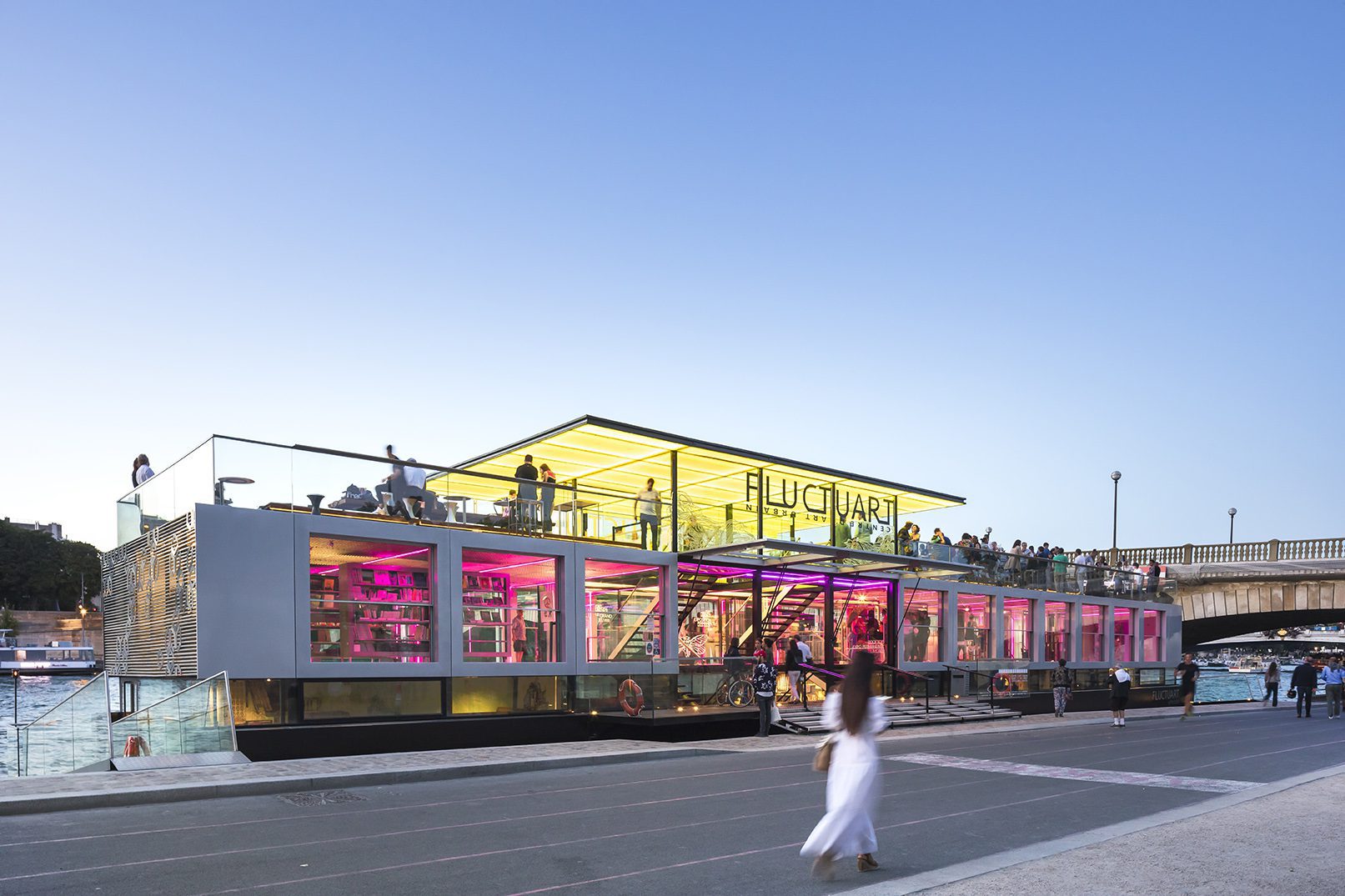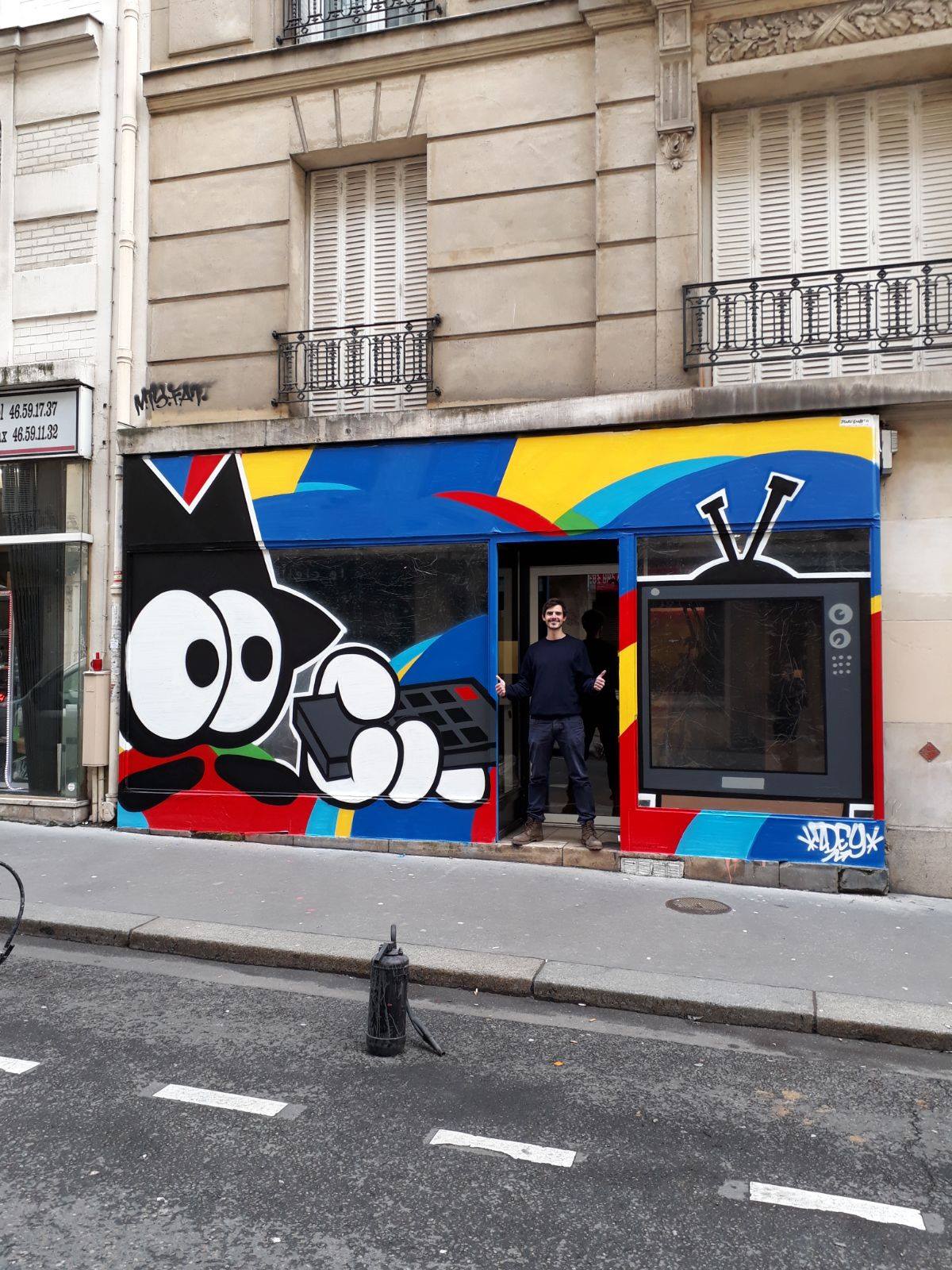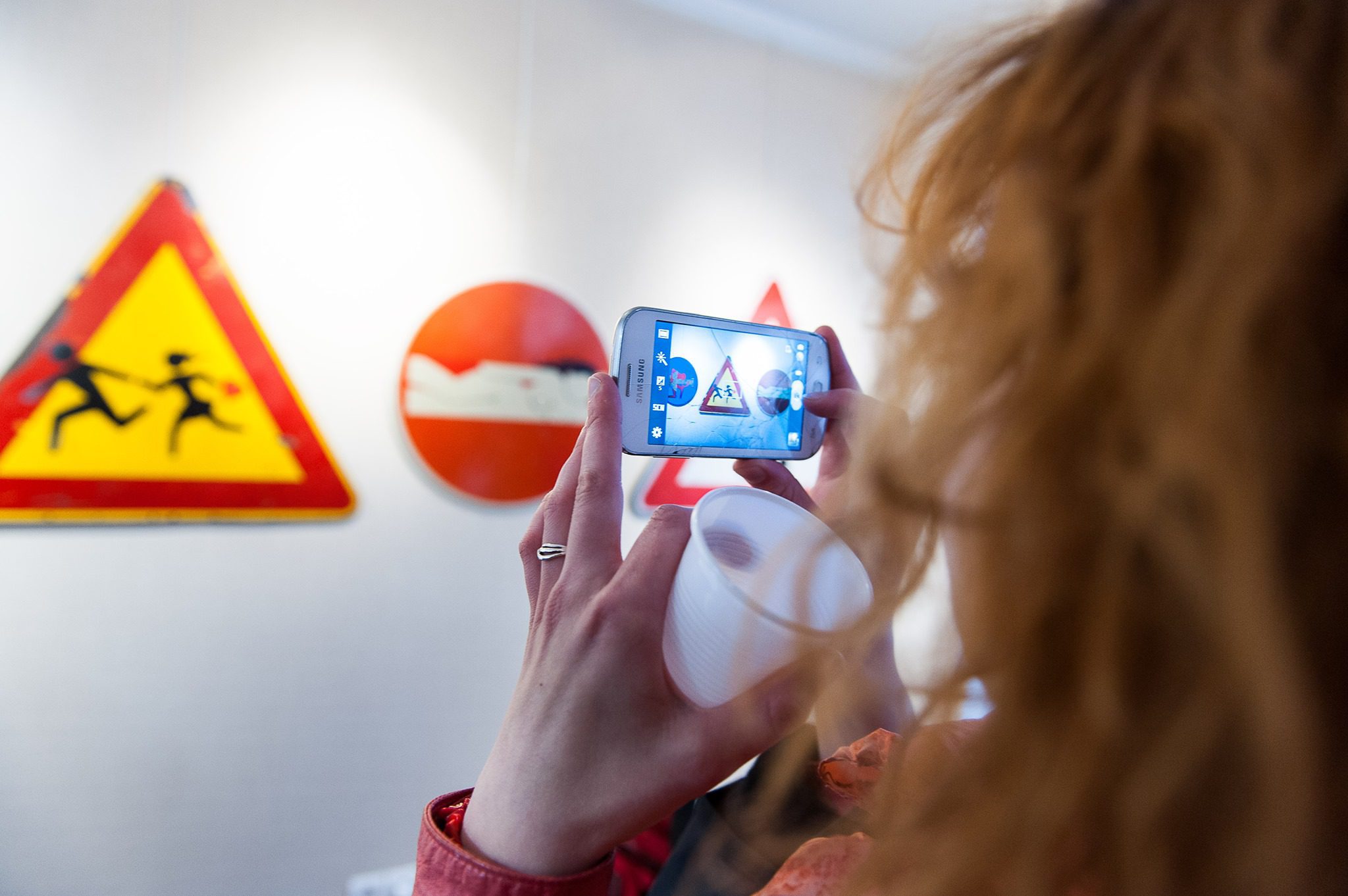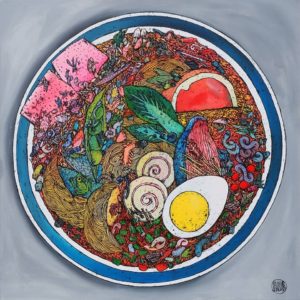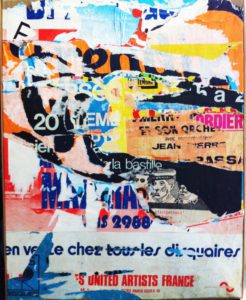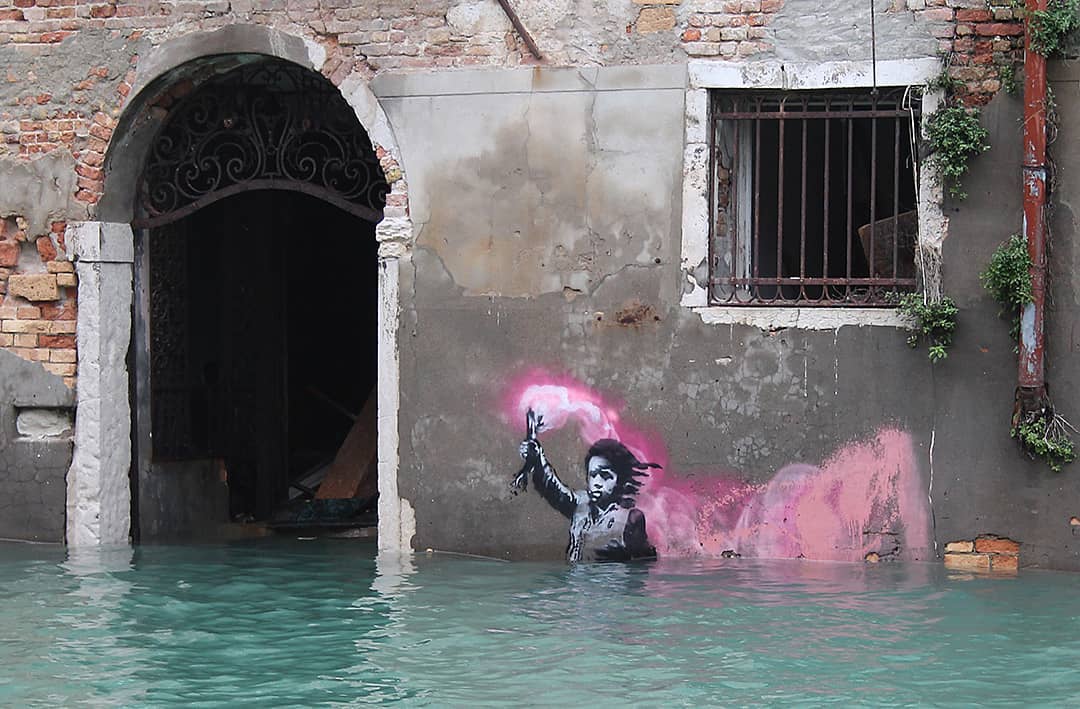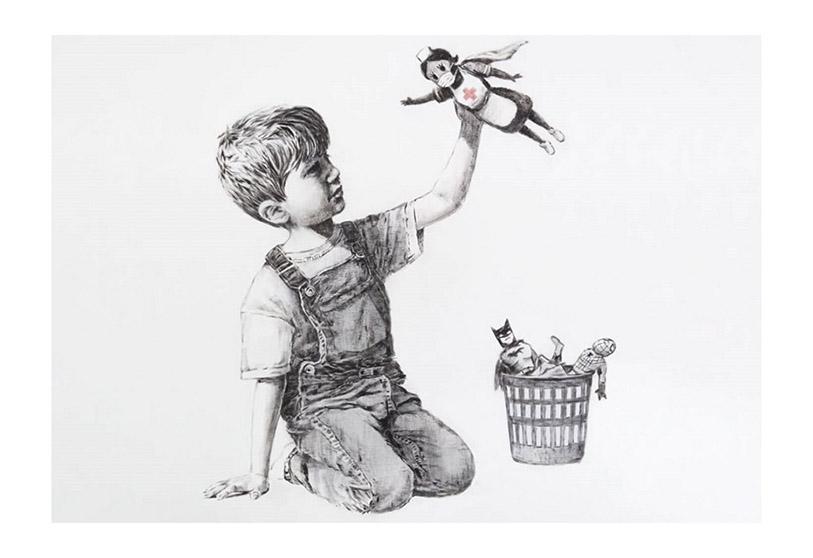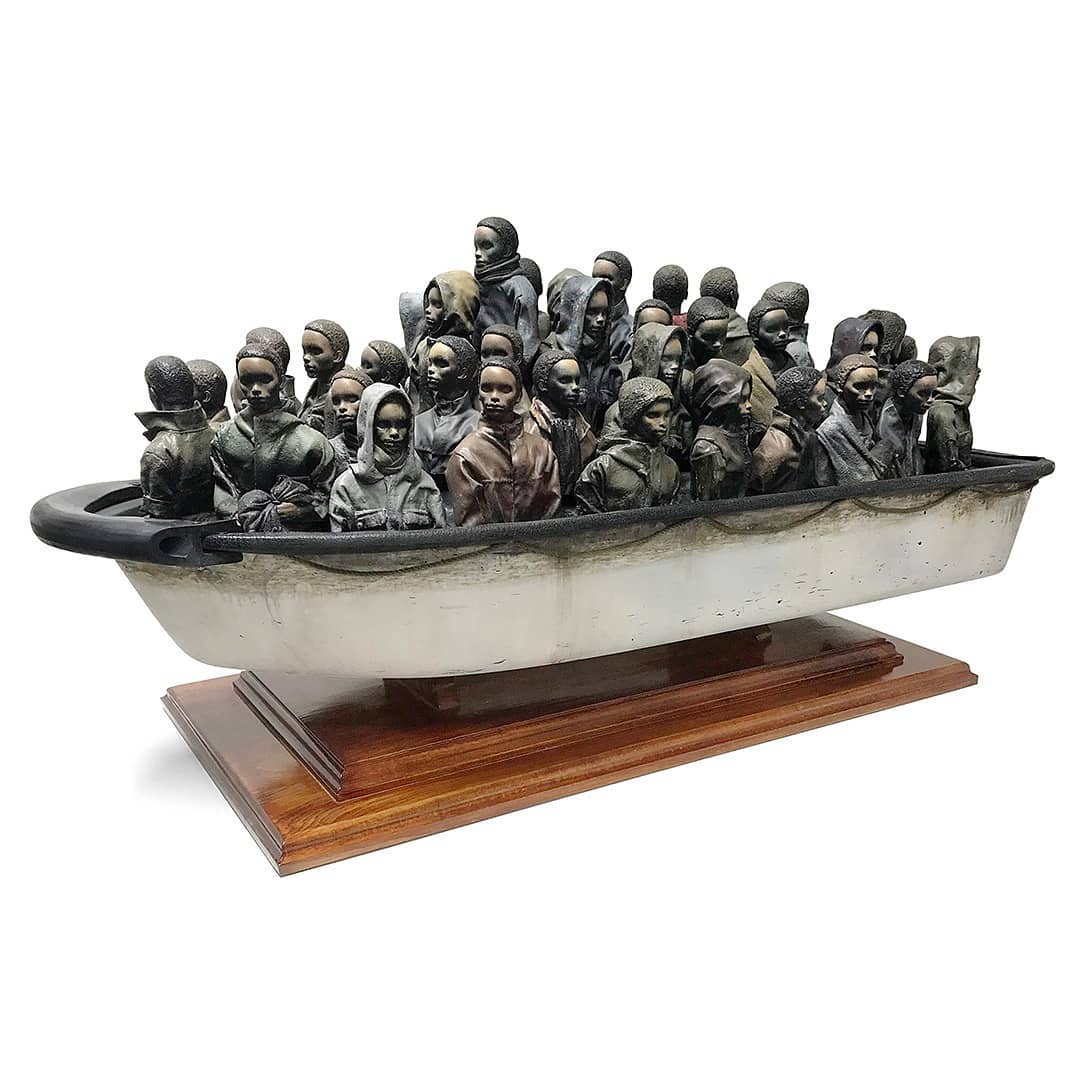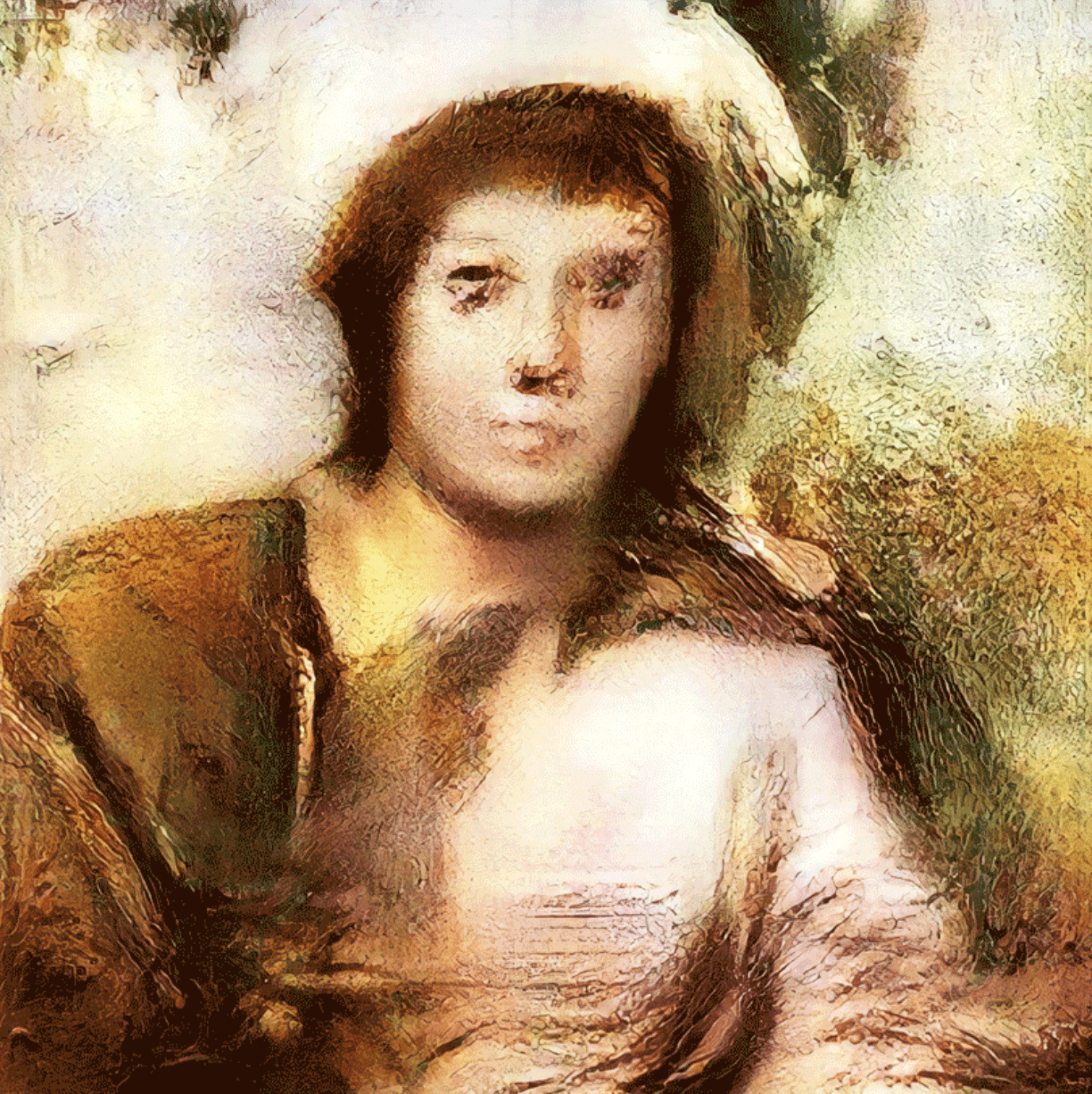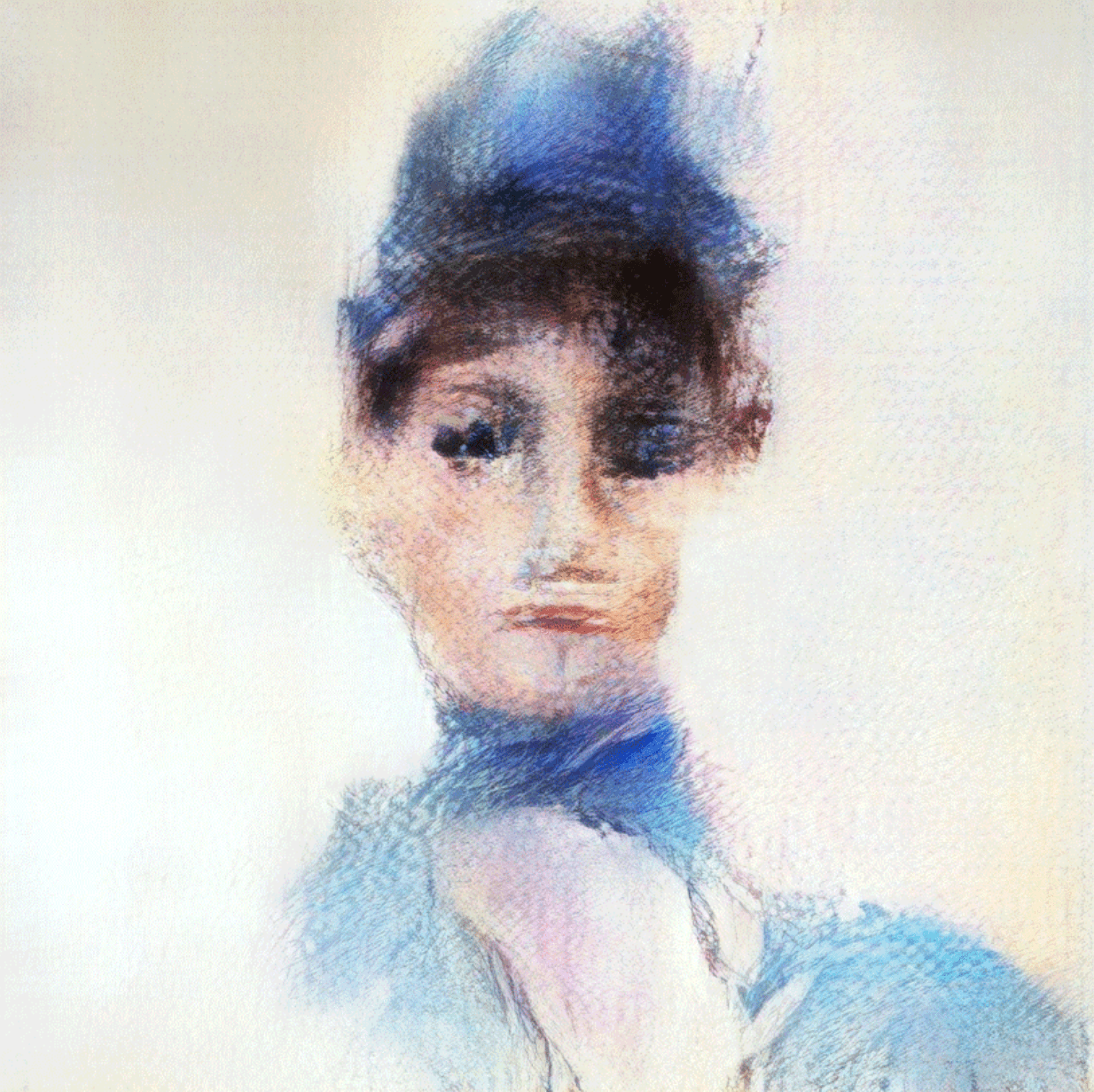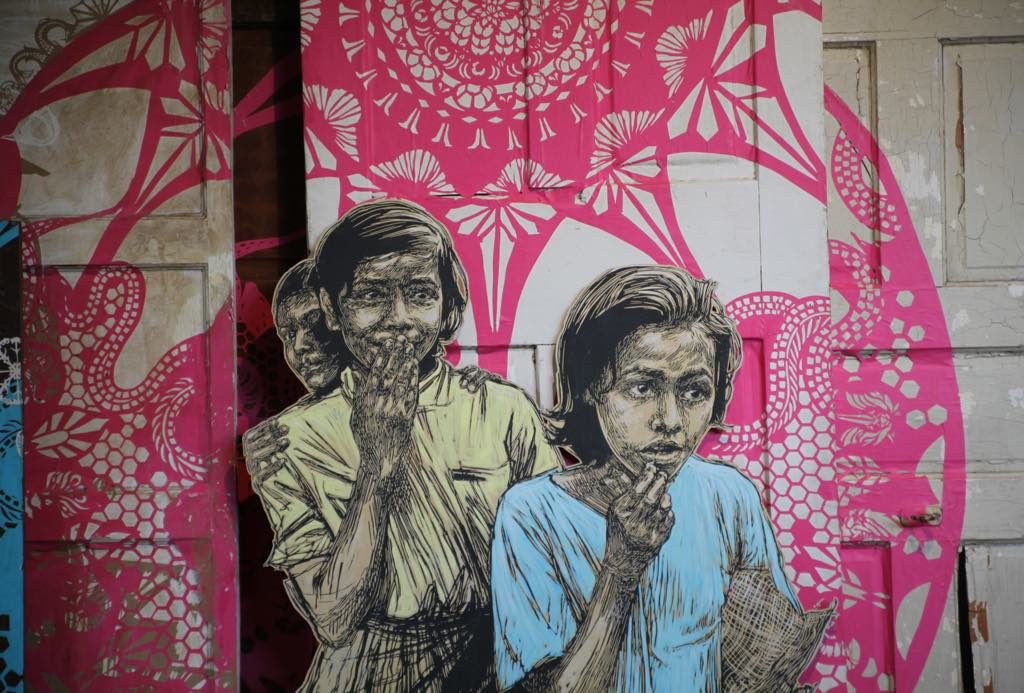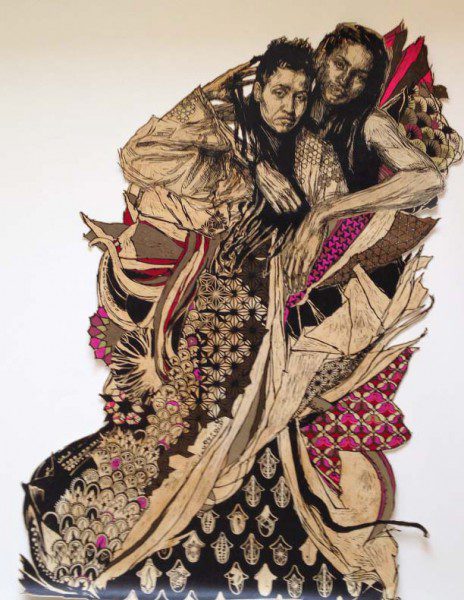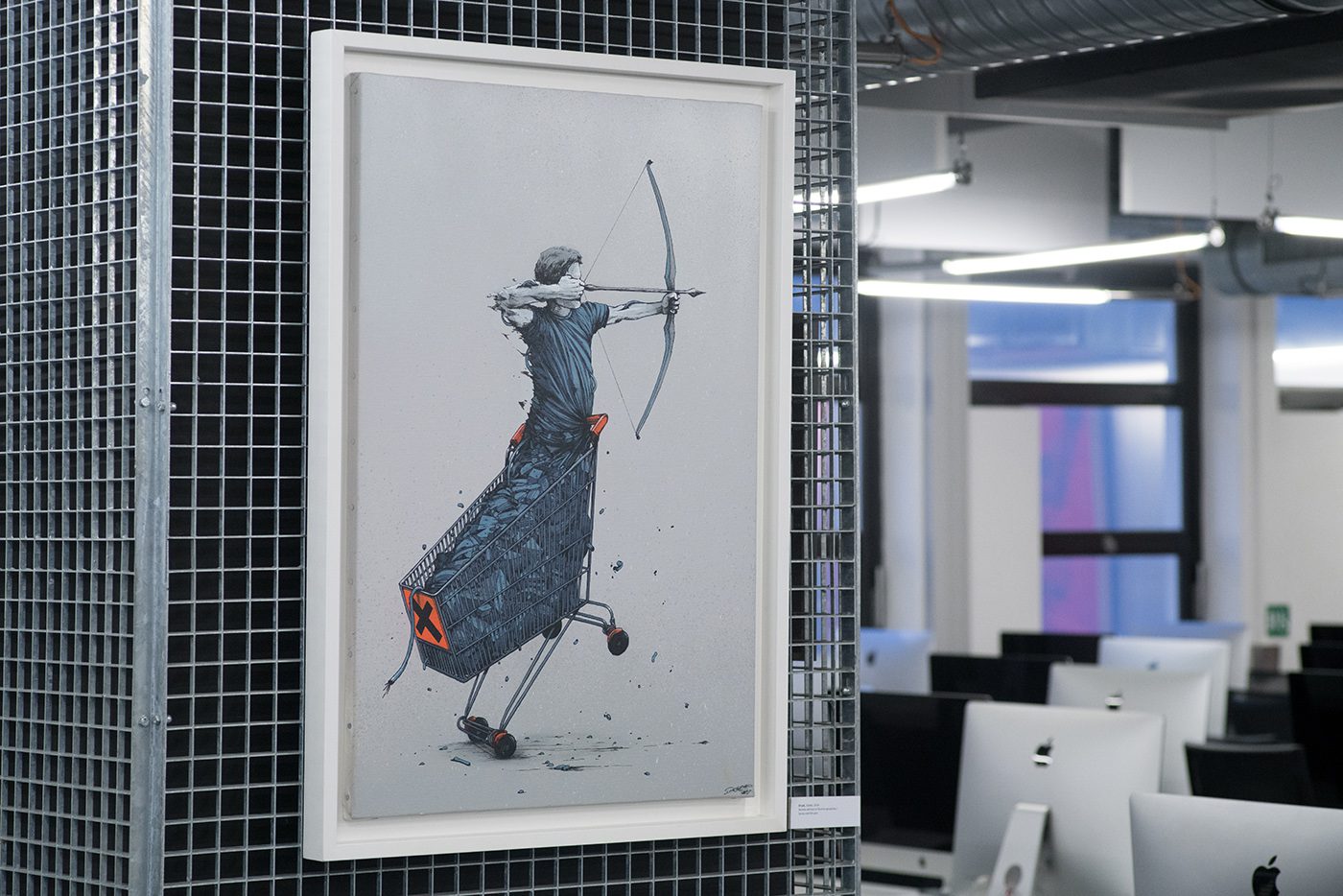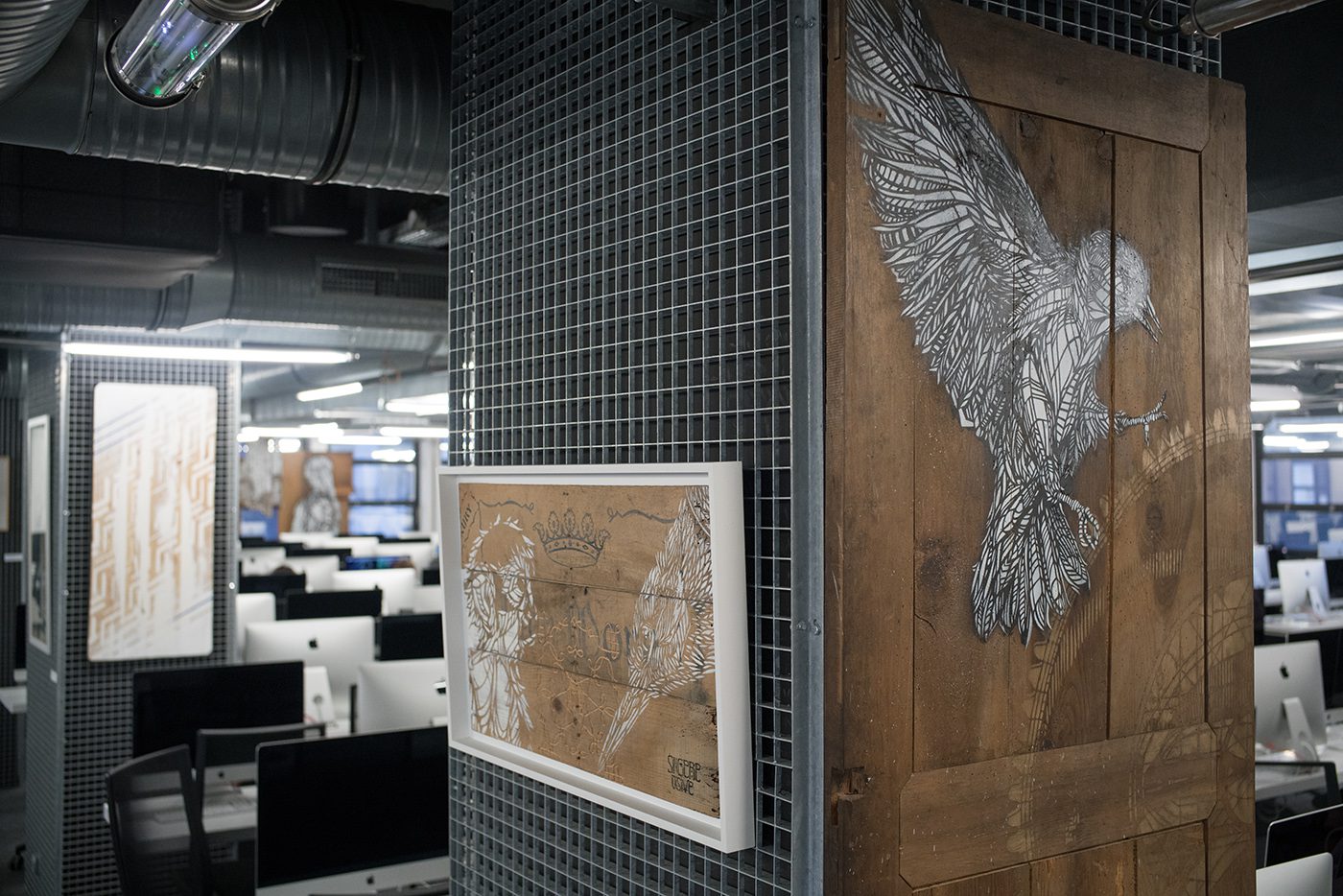 Right under Pont des Invalides and in front of the Grand Palais, last spring it dropped its anchor and opened its doors Fluctuart, a floating cultural center dedicated to Urban Art in Paris. Nicolas Laugero-Lasserre (Nice, France, 1975) is one of the founding partners and artistic director of this innovative project located on the waters of the Seine River. But Fluctuart is just one of all of the projects he’s involved into. Passionate about art and collector for more than 25 years, Laugero-Lasserre is the Director of the School of Cultural and Art Management ICART and founder of Artistik Rezo: an art gallery in the 11eme Parisian quartier that seeks a policy of affordable prices incentivizing new collectors, an art club and a blog and media. In his collection he treasures more than 700 pieces, including original works and silkscreen prints by artists like Swoon, Bault or Monkeybird, and it was in 2013 when he decided to take a large part of these pieces to ‘École 42’, a school dedicated to informatics and open to the public, and to the floating space of Fluctuart, together with pieces from other collectors, to tell the history of Urban Art. His latest project within this field is carried out in a Parisian shelter for homeless people, where he has taken almost ten artists to paint its walls. The link among all his projects? Nicolas aims to promote a more accessible art for everyone. We talk to him to get to know his collection from the inside, his beginnings collecting, more about he’s personal projects and some of his latest acquisitions.
Right under Pont des Invalides and in front of the Grand Palais, last spring it dropped its anchor and opened its doors Fluctuart, a floating cultural center dedicated to Urban Art in Paris. Nicolas Laugero-Lasserre (Nice, France, 1975) is one of the founding partners and artistic director of this innovative project located on the waters of the Seine River. But Fluctuart is just one of all of the projects he’s involved into. Passionate about art and collector for more than 25 years, Laugero-Lasserre is the Director of the School of Cultural and Art Management ICART and founder of Artistik Rezo: an art gallery in the 11eme Parisian quartier that seeks a policy of affordable prices incentivizing new collectors, an art club and a blog and media. In his collection he treasures more than 700 pieces, including original works and silkscreen prints by artists like Swoon, Bault or Monkeybird, and it was in 2013 when he decided to take a large part of these pieces to ‘École 42’, a school dedicated to informatics and open to the public, and to the floating space of Fluctuart, together with pieces from other collectors, to tell the history of Urban Art. His latest project within this field is carried out in a Parisian shelter for homeless people, where he has taken almost ten artists to paint its walls. The link among all his projects? Nicolas aims to promote a more accessible art for everyone. We talk to him to get to know his collection from the inside, his beginnings collecting, more about he’s personal projects and some of his latest acquisitions.
How did you started to become interested for art?
I arrived in Paris at the beginning of the 1990s and discovered many artists on the Parisian walls, in the streets of “La Butte-aux-Cailles” area. I was really amazed by all this art, free, accessible, colourful. At this time, I was not initiated to art, and I thought urban art was a really nice media for people like me. Later, I recognized some artists in galleries, and started to buy some pieces at a time when urban art was pretty much unknown. Only two specialized galleries existed!
Fluctuart boat Urban Art Center in Paris
What is the main artistic line of your collection?
I mostly buy urban art. Street artists share their personal view of society, of today’s world. I try to focus on their singularity, to promote a variety of messages. But I also like Contemporary Art and Ancient too, as long as it speaks to me. When I buy artworks I follow my heart, my crushes.
What are the most recurring artists in your collection?
I have many pieces of artists whom I support with Artistik Rezo, my gallery in the 11th neighborhood: Bault, Erell, Madame, MonkeyBird…
Exterior de Galerie Artistik Rezo de Zdey
Exposición de Clet
What was the first piece you acquired?
My first piece was a paint on cardboard from Miss Tic, that said “Le soleil nous laisse à des jours plus vieux” (“The sun leaves us to older days”).
Miss Tic
And last one?
One of the last ones was a big painting from Bault, “The Ramen”, that I bought on a fair. The richness of detail, the colors are impressive and significant.
Bault, ‘Ramen’, 2019
Do you have a special artwork that you value the most?
One of my favorite artwork is from Jacques Villeglé, one of the first famous urban artists from France. He created it in 1975 and it is done from torn posters, kind of a part of French history.
Jacques Villegle
About how many artworks do you have in your collection?
I have about 700 artworks, including many screen prints.
Who would you say are the most valued artists in an art collection nowadays?
I am a big fan of Banksy, he is a genius to me. What I prefer in his work is that he is always surprising: he comes where and when no one is waiting for him, always with a powerful message.
Banksy
Apart from collecting, do you invest in artists as a patron?
I mostly buy the artworks by following my heart, but I love supporting young artists. A few years ago, I discovered the Obvious Paris Collective. They created one of the first IA’s artworks. I was literally fascinated by their project and decided to support them, even though it’s not my major domain. I liked the disruptive aspect of it, it breaks the codes of everything we’re used to in the art market. I just found it amazing that some young people built a program allowing the creation of an original artwork, based on a selection of the best pieces from past art history. I like supporting innovations and people who believe in their dreams. If I can help them achieve those dreams, I try to do so.
Obvious Art, La Baronne De Belamy, GANs Algorithm, Inkjet printed on Canvas
Obvious Art, Madame De Belamy, GANs Algorithm, Inkjet printed on Canvas
Where do you usually buy art? It is on art fairs, online, to artists…?
Most of the time I buy artworks in galleries or in auctions. I also buy works directly from artists when they are not represented by a gallery yet.
What do you think about buying art online?
I have already bought online. It suits me when I already know the artist’s work, if not it’s more difficult, I prefer seeing it in real life. Actually it really depends on the artist and the piece.
Who is your latest artistic discovery?
I have known Swoon’s work for a long time, but last year I met her for her exhibition on Fluctuart. It was the very first exhibition of this project and I had a crush. She is a very touching person with a fascinating background. We built very strong ties and her life’s and art’s approaches really speak to me.
Swoon at Fluctuart
Is part of your art collection hosted in a public space?
I don’t want to keep my art collection for me, I want everybody to have access to art. That’s why I created Art42 in 2016: it is what someone once called an “anti-museum”, because it is hosted in a school (name 42, created by Xavier Niel). There’s about 200 artworks hanging there, the students can appreciate art on each floor, and present those art pieces to the public twice a month. Also some of my pieces are shown at Fluctuart, but among other collectors’ artworks.
Art42 – Brusk, Soldes, 2014
Art42 – MonkeyBird, Sans titre (série singerie oisive), 2014
Art41 – Jef Aérosol, Andy Warhol, Jean-Michel Basquiat, Keith Haring, Ian Curtis et Sandrine Bonnaire, 2013
Art42 – MONKEY BIRD, Serie Singerie Oisive, 2013
Do you have a close relationships with other collectors through associations?
Of course, some of them are close friends. I participated in more than 50 urban art exhibitions, sometimes with other collectors. On Fluctuart’s main floor we display our permanent collection, which explains the evolution of the movement. We called different collectors to tell a wealthier and more complete story.
Would you say you’re more interested in emerging or renowned artists?
I love discovering emerging artists and support their evolution.
How do you plan the future of your collection?
In order to develop art for everyone, I have started to bring art to one of the first Parisian shelters, ‘La Mie de Pain’, a year ago. It is a shelter for homeless people that helps them pulling through. I have already invited nearly ten artists to paint inside the building, and would like to develop this initiative. I also brought some of my collection’s artworks. I really believe that art can change people’s lives.
What is your advice for young collectors on a limited budget?
The best advice I can give is that people should be curious and follow their instinct more than the market. As it varies every day, instinct is sometimes wiser. You just have to start, to enjoy yourself, and not being afraid of making mistakes. At Artistik Rezo Gallery, we chose to have accessible prices, to help people that love art to buy it easily: it is possible to enjoy art without being wealthy!

